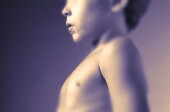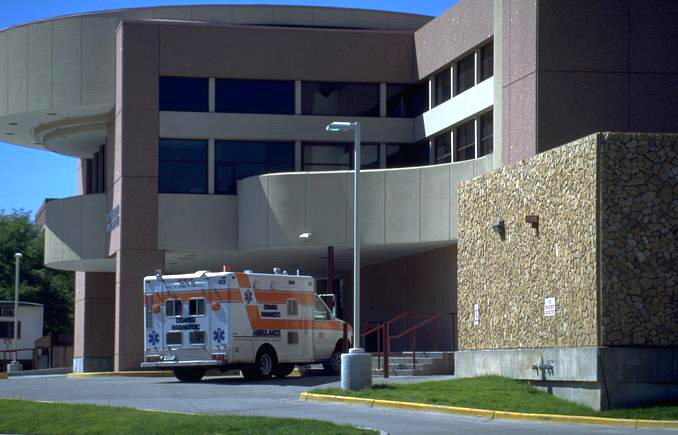
SATURDAY, May 1 (HealthDay News) — The number of abusive head traumas among infants and young children appears to have risen dramatically across the United States since the onset of the current recession in 2007, new research reveals.
The observation linking poor economics to an increase in one of the most extreme forms of child abuse stems from a focused analysis on shifting caseload numbers in four urban children’s hospitals. But the finding may ultimately touch upon a broader national trend.
“Abusive head trauma — previously known as ‘shaken baby syndrome’ — is the leading cause of death from child abuse, if you don’t count neglect,” noted study author Dr. Rachel P. Berger, an assistant professor of pediatrics at the University of Pittsburgh School of Medicine. “And so, what’s concerning here is that we saw in four cities that there was a marked increase in the rate of abusive head trauma among children during the recession compared with beforehand.”
“Now we know that poverty and stress are clearly related to child abuse,” added Berger. “And during times of economic hardship one of the things that’s hardest hit are the social services that are most needed to prevent child abuse. So, this is really worrisome.”
Berger, who also serves as an attending physician at the Children’s Hospital of Pittsburgh, is slated to present her findings with her colleagues Saturday at the Pediatric Academic Societies’ annual meeting in Vancouver, British Columbia, Canada.
To gain insight into how the ebb and flow of abusive head trauma cases might correlate with economic ups and downs, the research team looked over the 2004-2009 records of four urban children’s hospitals.
The hospitals were located in Pittsburgh, Seattle, Cincinnati and Columbus, Ohio. Only cases of “unequivocal” abusive head trauma were included in the data.
The recession was deemed to have begun on Dec. 1, 2007, and continued through the end of the study period on Dec. 31, 2009.
Throughout the study period, Berger and her team recorded 511 cases of trauma. The average age of these cases was a little over 9 months, although patients ranged from as young as 9 days old to 6.5 years old. Nearly six in 10 patients were male, and about the same proportion were white. Overall, 16 percent of the children died from their injuries.
The authors found that the changing economic situation did indeed appear to be associated with a shifting rate of abusive head trauma. While the average number of such cases per month had been just shy of five, that figure rose to more than nine cases per month once the downturn got underway.
The researchers further noted that as the economy tanked, the trend towards an increase in cases was most strongly evidenced in Seattle and Pittsburgh.
Berger and her colleagues were not able, however, to draw a specific link between certain aspects of the economy and the apparent abuse case spike.
The authors did not, for example, uncover any direct correlation between monthly unemployment rates in each hospital’s local county and local trauma caseload figures. Yet, because 90 percent of the young patients were already on Medicaid when treated — even before the recession — the researchers suggested that already-high local unemployment rates might not have been the best measure of a dipping economy’s real impact on trauma rates.
By contrast, the authors predicted that an analysis of alternative recession indicators — such as social service cuts and psychological stresses propelled by tough times — might ultimately get at the precise underpinnings of the apparent association.
“We did a very sophisticated type of analysis,” Berger nonetheless stressed. “So, this finding is not just attributable to chance, which means these findings should really give us pause.”
Jay G. Silverman, an associate professor of society and human development and health at the Harvard University School of Public Health in Boston, expressed little surprise at the findings.
“We’ve seen at the state and local levels services cut repeatedly over the last two to three years,” he noted. “And that, combined with a likely increase in the number of people in need of these services, would lead to a smaller percentage of these folks getting what they need, and perhaps leading to greater numbers of these kinds of situations escalating to the point where we’re observing more head trauma.”
Silverman, who also serves as director of Harvard’s Violence Against Women Prevention Research, added that where there’s a significant bump in rates of abusive head trauma, there’s most probably also an increase in less easily tracked forms of abuse.
“Abusive head trauma is one of the most observable indicators of child abuse, because they result from the most extreme domestic violence that requires hospitalization,” he noted. “But there are many, many, many more child abuse cases that we wouldn’t expect to show up as traumatic brain injuries in the ER. So an increase seen in head trauma is probably indicative of an even larger problem. And that means that this finding should really be a major public concern.”
More information
For more on child abuse, visit the Prevent Child Abuse America.

